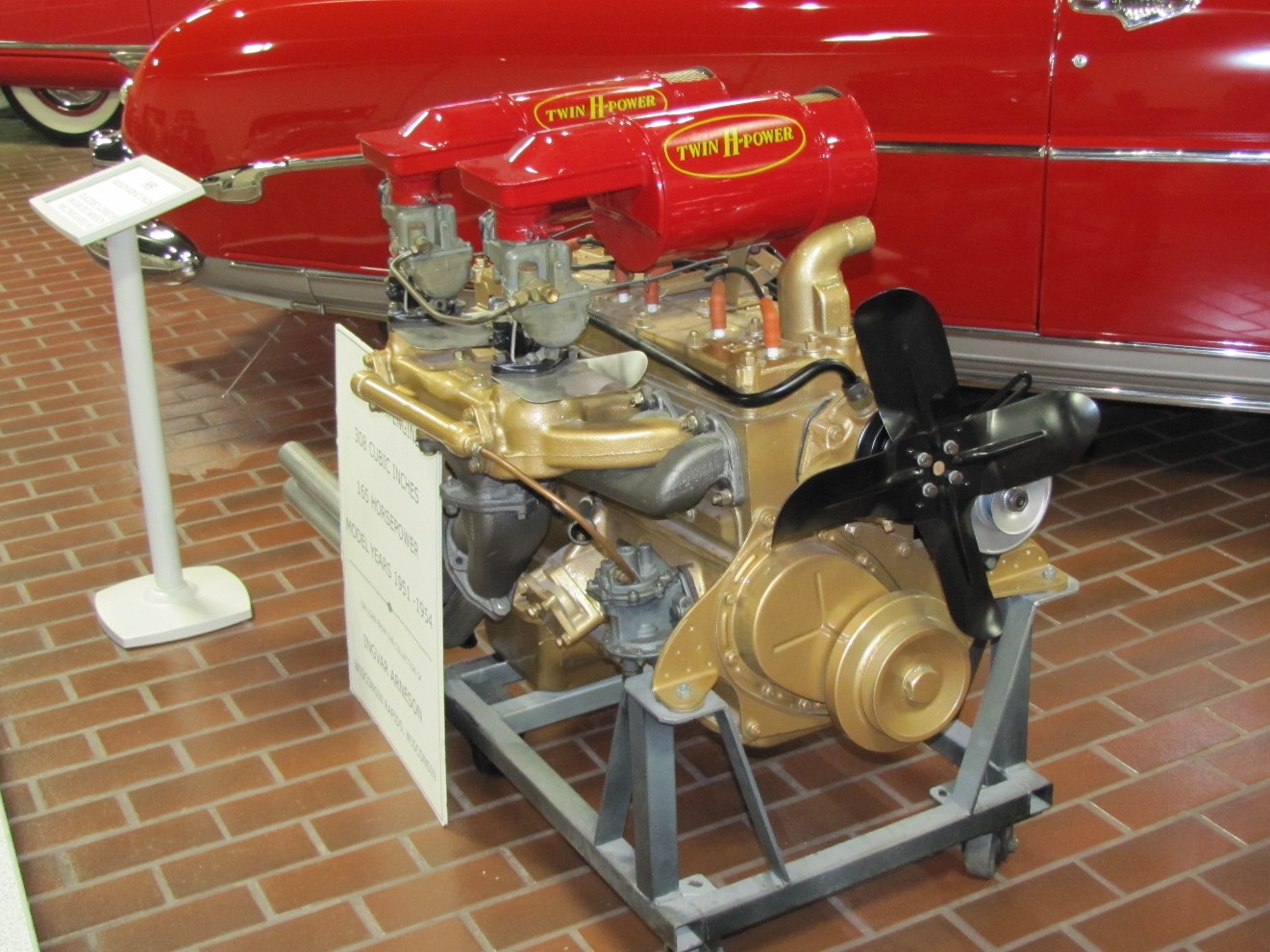Today’s date is one of the fun one when we play the displacement calendar game. Why? Well because we have two great engines. We already told you about the Holden 308ci V8 but what about the other? That’s the legendary 308ci “Wide Block” inline six that was made by the Hudson corporation in the early to middle 1950s. These engines dominated NASCAR racing at the time and were available on the street with the famed “Twin H Power” induction which employed two 1bbl carbs.
There was also and even higher performing version of the engine known as the 7X which was really the crown jewel of the program. Offered in versions that ranged from 145hp to 170hp and later 180+ and all the way into the 200+ horsepower range from the factory with the 7X, these things were anvil tough and did respond to the normal hot rodding tricks of the era well. Let’s be honest, they were also big engines for their day and we believe that the 308ci inliner was the biggest inline six ever offered in an American car.
Their grunt, their torque, and their stone simple reliability made them a great choice of racing. The Hudson’s famed “step down” layout means that it was low slung and very well suited to be ripping around a constant string of left hand corners at NASCAR bullring and tracks across the country so when combining the chassis and the engine it is no wonder that the two worked so well in beating up on the competition.
So let’s talk 7X. Originally this package was developed for use in police package cars and for high altitude operation but when racers and hot rodders learned about it, they started begging Hudson to sell them examples of the engine. While never “factory” installed, a customer could order the 7X engine and it would be installed at the delivering car dealership that the guy purchased his machine from.
The 7X engines were hand built on the line and they were sold in limited quantity because of this. Bigger valves were installed in the block (flathead remember) 2.00″ on the intake and 1.68″ on the exhaust. Each of those blocks was hand picked and and hand checked for core shift and cylinder wall thickness.
Amazingly, each engine was hand machined in terms of porting and bowl work. They were also relieved by hand, to boot! The head from the smaller 232ci engine was used to raise compression. Iron heads made 8.7:1 and the aluminum headed engines were a then very stout 9.2:1. Camshaft development was ongoing with the engine through the years of manufacture and designs changed on the fly. The hard parts for these engines like pistons, bearings, the crank, etc were all hand picked and hand installed at the factory, meaning that these were truly precision built high performance engines for their day.
The familiar Twin H intake with multiple carbs let the air in and a special high flowing, split exhaust manifold got the gasses out. That was a drastic improvement over the stock lump which would have totally choked this engine.
Horsepower was estimated to be 220-240. No official numbers were published but that is what the prevailing logic of the time was. Pretty bad ass, especially of an unlikely hero like a flathead six!
Here’s some Hudson 308ci flathead engines running!
BONUS: Massive blown Hudson stroker running! Nearly 6.0 liters!













I did not know that.
The series 80 Chrysler Imperial of the 20’s had a 310 ci flathead 6. The same design that lasted to the ’60s in trucks and the ’70s in industrial aps.